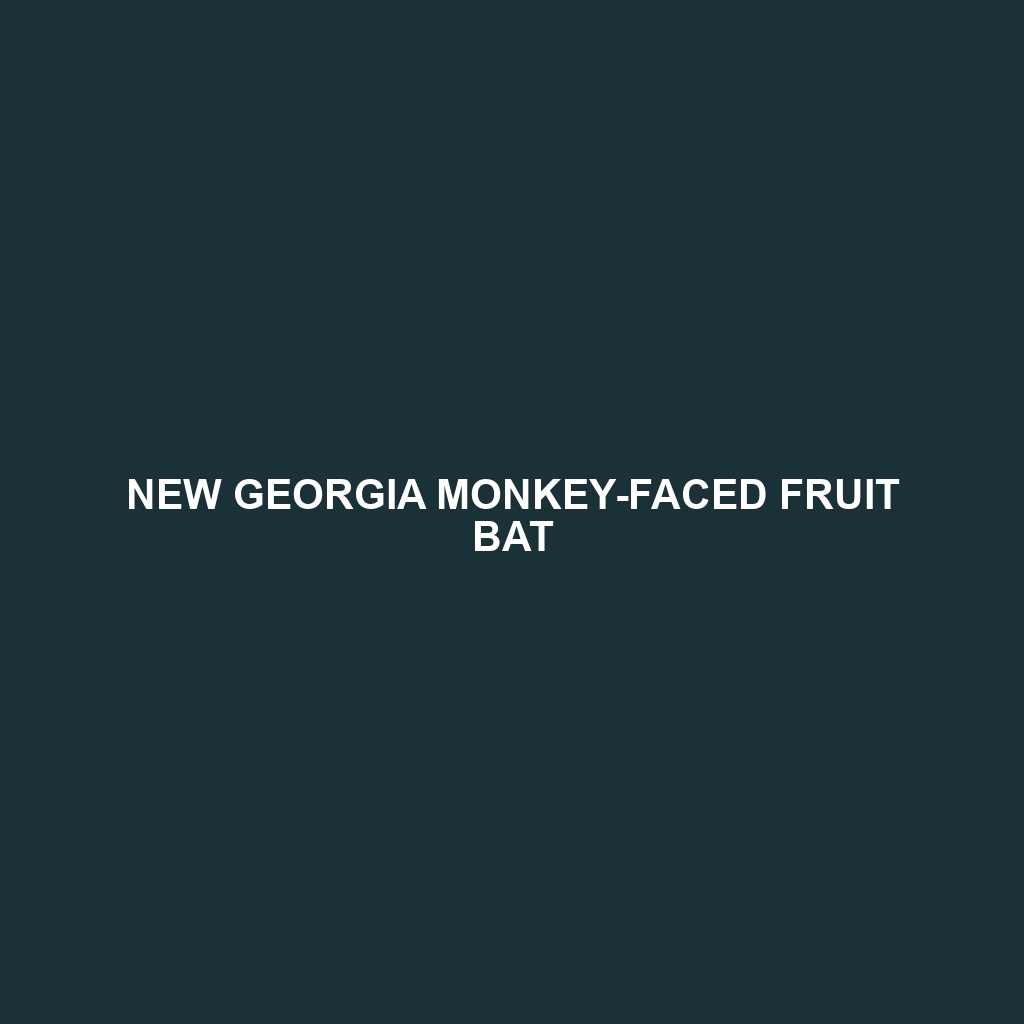Common Name: New Georgia Monkey-faced Fruit Bat
Scientific Name: Pteropus mackloti
Habitat:
The New Georgia Monkey-faced Fruit Bat is primarily found in the tropical forests of the Solomon Islands, particularly on the islands of New Georgia and surrounding regions. This species thrives in lowland rainforests, coastal areas, and sometimes in disturbed habitats where lush vegetation provides ample roosting sites. These bats prefer humid environments, often residing in caves, tree hollows, or dense foliage that offer protection from predators.
Physical Characteristics:
The New Georgia Monkey-faced Fruit Bat is characterized by its medium to large size, with a wingspan that can reach up to 1 meter (3.3 feet). Its fur is typically a rich brown color, with lighter shades under the belly. One of the distinctive features of this species is its unique facial structure, resembling that of a monkey, with a short muzzle and large, expressive eyes that enhance its nocturnal vision. The bat’s ears are also prominent, aiding in sound location when hunting for fruit.
Behavior:
This species exhibits primarily nocturnal behavior, emerging at dusk to forage for food. The New Georgia Monkey-faced Fruit Bat is known for its social nature, often roosting in large colonies that can include several hundred individuals. These bats utilize echolocation for navigation and are often observed flying through forest canopies, demonstrating agility and grace as they travel between fruit-bearing trees.
Diet:
The diet of the New Georgia Monkey-faced Fruit Bat consists mainly of ripe fruits, particularly figs, and other tropical fruits. Its feeding habits play a vital role in seed dispersal, contributing to the growth and regeneration of forest ecosystems. The bat’s preference for soft-skinned, high-sugar fruits makes it a key player in the food web of its habitat.
Reproduction:
This species typically breeds once a year, with mating occurring during the warmer months. After a gestation period of around 5 months, females usually give birth to a single pup. The young bat clings to its mother’s belly for several weeks, gradually gaining independence as it learns to fly and forage. Parental care is evident, as mothers are known to be protective and nurturing during the early stages of development.
Conservation Status:
The New Georgia Monkey-faced Fruit Bat is currently classified as vulnerable by conservation organizations due to habitat loss caused by deforestation, agricultural expansion, and hunting practices. Conservation efforts are crucial to ensuring the survival of this unique species, which faces threats from declining forest areas and human encroachment.
Interesting Facts:
One fascinating fact about the New Georgia Monkey-faced Fruit Bat is its ability to consume fruits that are larger than its head, thanks to its strong jaw and teeth. Additionally, its social behavior allows for complex communication within colonies, including vocalizations and visual signals that enhance group cohesion.
Role in Ecosystem:
The New Georgia Monkey-faced Fruit Bat plays a significant role in its ecosystem as a seed disperser, helping to maintain the health and diversity of tropical forests. By consuming fruits and moving through various forest layers, it aids in propagating a variety of plant species, thus sustaining the ecological balance of its habitat.
This SEO-optimized species description provides a comprehensive overview of the New Georgia Monkey-faced Fruit Bat, enhanced with relevant keywords and structured in a reader-friendly HTML format.
